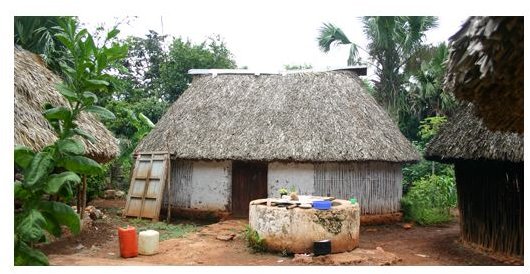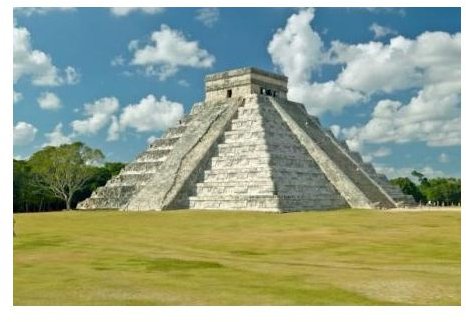Overview of Ancient Mayan Architecture: A Look at Design & Buildings
Maya, a great civilization of the past, is remembered for its rich values and high thinking – a trait which is easily reflected in its language, fine art, food patterns, mathematics, and especially its architectural style. Mayans are known for using the improvised versions of everything that already existed. This innovative style of theirs is prominently visible in their architecture, which included structures from mini-huts to big dwellings and state-of-the-art temples.
Basic Architectural Style
The most common and basic architectural style of the Mayan civilization can be seen in the homes of their average citizens. These were mainly hay-huts, a type of building wherein the majority of Mayan people lived.
Based on bilateral symmetry, these hay huts had walls made of either mud or stone and were enveloped with wooden-poles of about two meters. The entire formation rested on these wooden poles which were around three-four meters in height. This particular arrangement helped in creating a bond on either sides of the hay structure. Apart from this, another material which was extensively used for construction was limestone. While hay was used for the general populace, limestone, because of its abundance and appearance, was used for the buildings of upper class people. However, the layout of both these construction styles remained almost the same.
With the change in construction material, even the height of the construction varied, as some material can withstand the height, while others cannot endure the high elevation. The height of these structures ranged from just fifty centimeters to over two meters, and around forty-five meters in case of temples. In temples, the façade was mostly sectioned into two, where the layout of the interiors depended on the utility. The inside of the whole structure was easily accessible through a staircase that was pointed and extensive.
Also, roofs were given additional prominence in the structures. Some popular roof structures were sticking-out stone, dome and beam roofs, all enveloped with lime and cement. The procedure for building roofs involved filling void spaces with wood-sticks and cement, making the beam almost thirty centimeters thick. When the cement dried, beams were removed from beneath, a practice which is still in existence. Moreover, the constructions also had slopes through the center with complex designs made from plaster. Some of the buildings were also ornamented with stone carvings, hieroglyphic inscriptions, and drawings of humans, animals, birds, or serpents.
The materials used for building these artistically renowned structures were mostly stones found in and around the city. Among them, limestone was very popular mainly because of its easy availability. The other accepted construction material was mortar, which was prepared scientifically by burning limestone.



Religious Structures

In any civilization, religious buildings and temples demonstrate the peak of architectural design. Like other civilizations, Mayan temples and pyramids are also well-known for their enormity and splendor. The exteriors of the temples were typically beautified with roof-combs. Built on huge pyramid-like structures with slant foundations, these beautiful structures were carved out of stone with stucco designs on the outside while the interior walls were adorned with mural paintings. Moreover, every side had a staircase that led to the temple. The layout was made complete with two dark hall-rooms where all the ceremonial performances were carried out. Their god’s face was carved on the backside of the wall. A noteworthy feature of these temples was the sky roof which was used to offer prayers. The sky roof design is evidence of a religion that centered on a god that resided in the sky.
Mayan Pyramids were known for their unique design. Pyramids were segmented into two types, one which were too sacred to be touched and the other for performing rites and rituals. The steep staircase that went inside had doors that sometimes led nowhere. Some pyramids even doubled up as burial chambers for top-notch authority. One interesting fact about the temples was that they built one on top of another, with several often clustered into a single pyramid.
Mayans are renown for their achievements, whether it’s for astronomy or celestial objects. Their architecture is so impressive that many modern buildings are inspired by the intricate beautification and finesse. The grandeur of the civilization is yet to inspire many more arenas of contemporary and future architectural styles.
